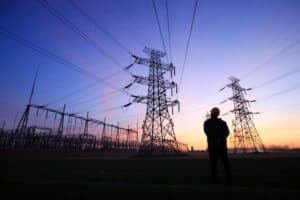Small changes can have a big impact.

The annual double-digit increases in the price of electricity in recent years have sent household energy bills skyrocketing. But there are a number of simple changes that households can make to reduce their electricity consumption and therefore their electricity bills. Even more material ones are possible for homeowners (those not renting).
The graph below shows changes made in a 166m2 three-bedroom sectional title unit and their impact over time. The unit has three family members.
Over a period of three years, the owner has reduced electricity consumption from over 600 kilowatt hours (kWh) per month to approximately 350kWh. All laundry is in cold water (and has always been), lights are switched off when rooms are not occupied, and cooking is done on a gas hob (and electric oven).

The graph below shows changes made in a similar-sized, three-bedroom sectional title unit (168m2). Until mid 2018, the unit had three family members.
A new owner with two family members took occupation in August. Even here, the owners have over a period of two years halved their electricity consumption to under 250kWh per month. Laundry is also in cold water, lights are switched off when rooms are not occupied, garden lighting is solar, and cooking is on a gas hob (and electric oven).
A further material change was made in late 2018 when the geyser temperature was adjusted downwards and the timer cut from two four-hour blocks daily to just one (mornings). Water is heated ad-hoc if required outside of those times. Also, the winter heating with air-conditioners did not repeat this year. Gas was used.

Implementing even some of the changes made by these owners as well as others suggested by an energy expert will see consumption drop.
Light bulbs
In the above homes, all incandescent bulbs – mainly candle bulbs in chandeliers and bedside lights – were initially changed to compact fluorescents (CFL) in the first year. In the past 12 to 18 months, however, they changed to LED bulbs as these became more affordable, at around R20 per bulb.
Payback on LED bulbs for lights that operate for approximately five hours per day is typically four to six months.
Building a habit of switching off lights when a room is not occupied will also reduce consumption.
It is worth taking a look at down lights too as many are still 40 to 45 watt bulbs. They can be replaced with 3W LED bulbs, which are now available.
In complexes, common area lighting is often overlooked. At the above complex, just by changing floodlights from halogen to LED, and other lights to CFL and thereafter LED, has seen electricity consumption halve from around 2 000kWh per month to around 1 000kWh.
Geyser
Geysers typically account for 40-60% of the electricity consumed in a home. Simply changing the temperature of from 80°C to 55°C will see a saving of 50-100kWh per month. The benefits of installing a geyser timer can be material, but much will depend on a household’s individual circumstances. Where there is a clear benefit, however, is in switching off the geyser at the mains if you are away for two or more days at a time.
The simple insulation of a geyser with a blanket will also yield a drop in electricity consumption.
Heat pump
Fitting a geyser with a heat pump can save 60% of the geyser electricity consumption. This means that, at a price of an estimate R16 000 installed, the payback would be between four and six years under current electricity tariffs. With estimated price increases in the next few years, the payback period will likely be three to four years. One downside, though: heat pumps are noisy.
Solar geyser
At a similar price to heat pumps (R16 000 to R20 000), paybacks will be around the same (four years). Solar geysers are silent and work well, but can be more expensive than heat pumps and is not always suitable (when there isn’t enough sunlight, for example).
Washing
Washing laundry in cold water costs nothing and the savings can be quite substantial, although this will vary from machine to machine. Some appliance makers estimate that 75-90% of all the energy used by a washing machine goes to warming up the water.
Fridge/freezer
Changing from a chest freezer and an inefficient old fridge to a new, energy efficient fridge/freezer combo can save 150kWh per month. In one of the households above, the saving was 100-150kWh per month. At the cost of R7 000 for a new appliance, the payback is approximately three years.
Gas cooking and heating
These calculations are more difficult to do, as patterns will vary from household to household.
A 9kg gas cylinder, at just over R200, will power a stove for three to six months, depending on how often it is used. This equates to R30-R60 per month for stove-top cooking.
Electric bar/fan/oil heaters should be avoided at all costs.
The installation of a solar system to augment or replace grid supply is an obvious option. There is the added benefit of avoiding the impact of any load-shedding or power outages. Here, however, there is no cookie-cutter solution. Each installation has to be correctly sized for the particular house and its typical electricity consumption pattern.
It is worth doing this exercise and figuring out whether the investment makes sense. Some households are seeing payback in approximately three years, while for others (particularly those who rushed to solar before prices really dropped) the payback period is longer.
Hilton Tarrant works at YFM. He can still be contacted at [email protected]
Brought to you by Moneyweb






